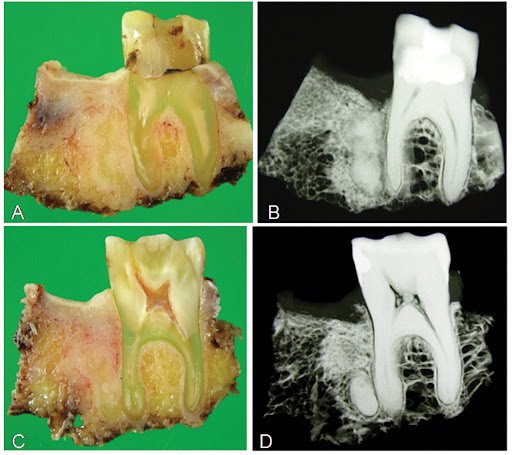Learn about the structure of the thyroid gland
Written by General Internal Medicine - Department of Examination & Internal Medicine - Vinmec Nha Trang International General Hospital.
The thyroid gland is a very small organ located in front of the neck, in front of the skin and muscles, behind the trachea. The thyroid gland weighs about 10-20 grams, composed of 2 right lobes, left lobe and 1 isthmus connecting the 2 lobes together. It is the largest endocrine gland in the body with the main function of secreting the hormones T3 and T4. Too much hormone causes hyperthyroidism, whereas too little hormone causes hypothyroidism.
1.What is thyroid toxicity? Toxic thyroid tumor, also known as Plummer's disease, in this disease, goiter is a hyperfunctioning parenchymal nodule that secretes too much thyroid hormone, causing toxicity in the body.
Disease manifestations are usually thyroid nodules (solitary nodules) accompanied by thyrotoxicosis, with prominent cardiovascular symptoms (tachycardia, arrhythmia, heart failure)
The disease usually occurs in women Older women (60 - 70 years old) with a history of goiter and a family history.
2. How is a diagnosis of toxic thyroid nodules made? Thyroid nodules generally do not cause symptoms. Some due to increased secretion of many hormones will present with hyperthyroidism syndrome. The best way to find thyroid nodules is to do a neck exam and ultrasound of the thyroid.
Initial tests may include a blood test for thyroid hormone (Thyroxine, or T4) and thyroid-stimulating hormone (TSH) in the blood to determine if the thyroid gland is working properly. Thyroid nodules can produce an excessive amount of thyroid hormone causing hyperthyroidism
Because it is not possible to determine whether a thyroid nodule is cancerous or not through clinical examination and blood tests, evaluation of the thyroid nodule is recommended. usually includes special tests such as ultrasound and fine-needle aspiration thyroid cytology.
2.1 Learn thyroid ultrasound techniques Thyroid ultrasound evaluates the size of nodules, helping to identify nodules that are too small to be felt during clinical examination. Ultrasonography can help suggest nuclear features suggestive of cancer. Ultrasound can also be used to precisely direct the needle directly into the nucleus during fine-needle aspiration thyroidectomy. Thyroid ultrasound can be used to monitor thyroid nodules without surgery to determine if they are growing or shrinking over time. Ultrasound is a non-invasive, reusable technique.

Siêu âm tuyến giáp giúp bác sĩ đánh giá tình trạng tuyến giáp
2.2 Fine Needle Aspiration Thyroid Aspiration (FNA) Fine Needle Aspiration Thyroid cytology is a simple procedure, sometimes medications such as anticoagulants may need to be stopped a few days before the procedure. art. In addition, the procedure usually does not require any other special preparation (no fasting). Patients are usually able to go home or work after the biopsy without a bandage.
For fine-needle biopsies, the doctor will use a very thin needle to draw cells from the thyroid nodule, which are examined under a microscope for evaluation by a pathologist. Fine-needle aspiration cytology (FNA) results typically indicate the following:
Benign nodules: This result accounts for 80% of biopsies. The risk of missing a cancer when the biopsy is benign is usually less than 3%. This is even lower when the biopsy is reviewed by an experienced pathologist at a major medical center. In general, benign thyroid nodules do not need to be removed unless they cause symptoms such as choking or difficulty swallowing. Ultrasound for follow-up is important, and at times, a repeat biopsy may be needed, especially if the nodule grows over time. Malignant or suspected malignancy: Malignancy results in approximately 5% of biopsies and is usually due to papillary carcinoma, which is the most common type of thyroid cancer. Suspected biopsies have a 50-75% risk of cancer. This result requires surgical removal of the thyroid gland after consultation with an endocrinologist and a surgeon. Unspecified nuclei: This is a group of several diagnoses that may occur in 20% of cases. An indeterminate result means that even though a sufficient number of cells were obtained during the fine-needle biopsy, microscopic examination cannot reliably classify the result as benign or cancerous. . Biopsy may be inconclusive, as the nodule is described as a cystic lesion, with a 20 to 30% cancerous risk. However, the diagnosis can only be confirmed with surgery. When determining a noncancerous nodule by surgery, only the portion of the thyroid gland that contains the nodule is usually removed. If cancer is found, the entire thyroid gland is removed.
Biopsy may also be inconclusive because the cells from the thyroid nodule have features that do not fall into one of the diagnostic categories. This diagnosis is called atypia (empty cell), or an unspecified cystic lesion. The diagnoses in this category are rarely cancerous, so re-evaluation with fine needle aspiration cytology or immediate biopsy is recommended during surgery to remove half of the thyroid containing nodules.

Chọc hút tế bào tuyến giáp bằng kim nhỏ (FNA)
3. Biopsy results may not qualify for diagnosis This is seen in less than 5% of cases when ultrasound is used to perform FNA. Results indicated that not enough cells were obtained for diagnosis but are common in cyst identification. These nodules often require reevaluation with a second FNA or surgical resection according to the clinician's clinical judgment.
Currently, Vinmec International General Hospital is equipped with advanced modern equipment and a team of leading experts with high expertise, serving in the examination and screening of common thyroid diseases such as: Simple goiter, hyperthyroidism, hypothyroidism, thyroiditis, thyroid nodules, thyroid cancer... Through the test results, the doctor will advise and choose the best treatment for the patient's health. as well as limit the complications affecting health later on.
Để đặt lịch khám tại viện, Quý khách vui lòng bấm số HOTLINE hoặc đặt lịch trực tiếp TẠI ĐÂY. Tải và đặt lịch khám tự động trên ứng dụng MyVinmec để quản lý, theo dõi lịch và đặt hẹn mọi lúc mọi nơi ngay trên ứng dụng.






